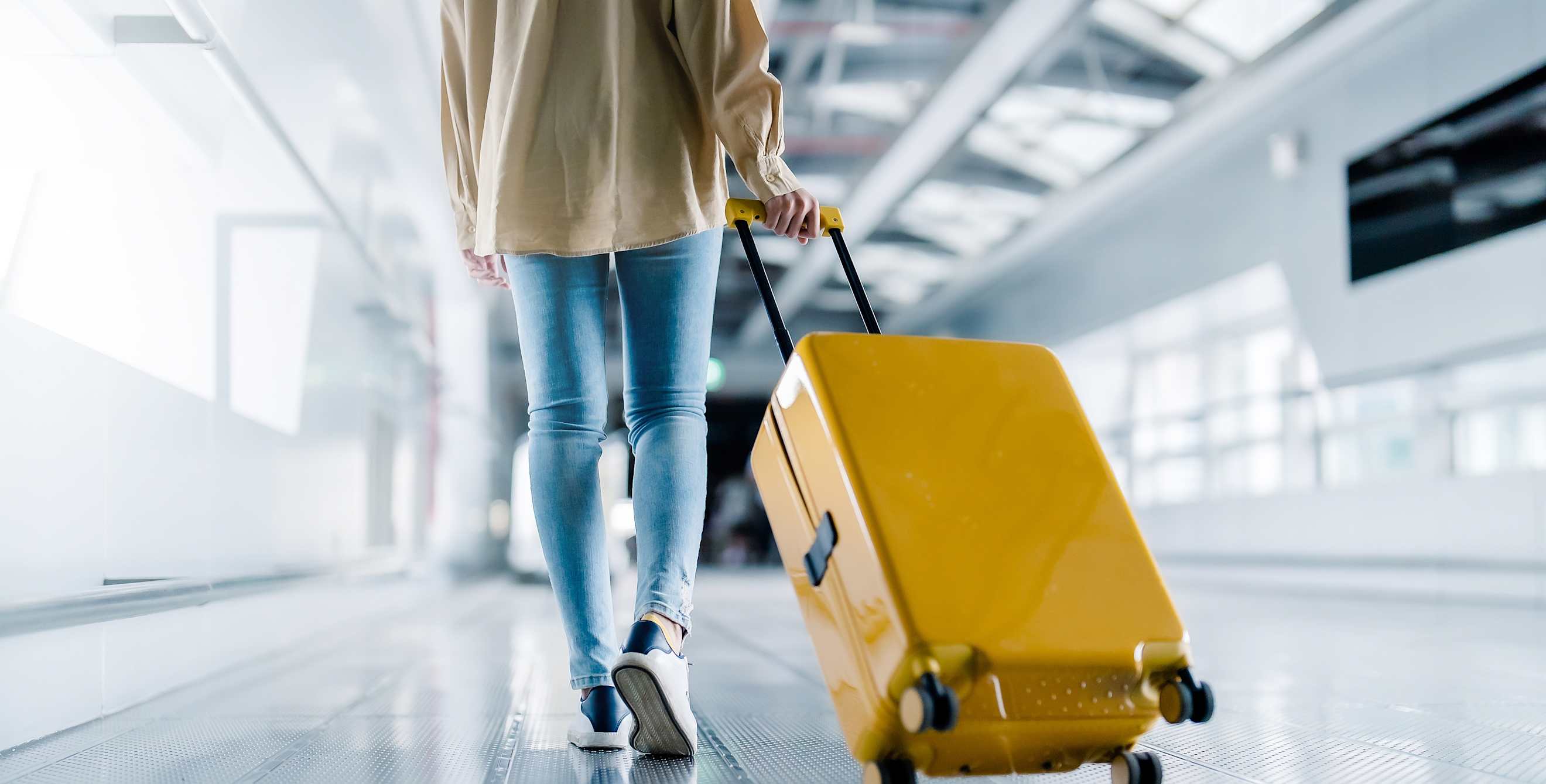
Fast-Track Travel with Mobile Passport Control
A little-known free app streamlines re-entry into the U.S.

If you’ve traveled internationally, you’ve probably had this frustrating experience when you return to the U.S.: You rush off your plane, desperate to get home, only to get stuck behind a jumbo jet’s worth of travelers log-jammed at customs and immigration. The wait is even more nerve-wracking when you’re in danger of missing your connecting flight.
It doesn’t have to be this way. You could instead breeze through an express lane, armed with a free app that might be the best-kept secret in travel: Mobile Passport Control (MPC).
Operated by U.S. Customs and Border Patrol, MPC does not require an application process or preapproval. You can download the app in seconds from the Apple App store or Google Play store. When you arrive at certain airports or seaports, you simply digitally submit your passport, a selfie, and your customs declaration information through the app. Next, you’ll zip through the Mobile Passport lane. The line will likely be short, because as of fiscal year 2024, only 8 percent of eligible travelers are using this system.
Why isn’t MPC more popular? Partly because it hasn’t been widely publicized, but also because it has limitations. Let’s navigate the ins and outs of the app.
Who can use MPC?
The app is available for U.S. citizens, U.S. lawful permanent residents, Canadian B1/B2 citizen visitors, and returning Visa Waiver Program travelers with approved ESTA (Electronic System for Travel Authorization).
Where can travelers use the app?
MPC works when you’re returning to the U.S. after international travel. The service is currently available at 34 U.S. international airports, four U.S. seaports, and 14 international “preclearance” airports. At preclearance sites—located at some airports in Canada, Ireland, Abu Dhabi, and the Caribbean—you can get your documents inspected by CBP prior to boarding your U.S.-bound flight. Then when you land, you can bypass CBP and Transportation Security Administration (TSA) inspections.
You can find the CBP’s full list of MPC-qualifying entry ports here. Note, however, that not every airport and seaport that offers this program will have dedicated MPC lanes open all the time. If there’s a shortage of staff or space, you may have to wait in the regular line.

How exactly does MPC work?
After you download the app, you’ll submit your information when you arrive at your point of entry, whether that’s a U.S. airport or a preclearance international airport. First, the app will ask you to fill in your U.S. arrival airport or seaport. Then you’ll select your document type (such as U.S. passport or Lawful Permanent Resident Card) and scan your document or manually enter the information.
Next, you’ll answer the usual customs and immigration questions, such as whether you’re carrying fruit or if you have anything to declare. (You do not need to fill out a paper customs declaration form, since you’ll answer those questions via the app.) Then you’ll take a selfie and submit the information to CBP. Families of up to 12 people can submit one group MPC transaction, and you can save all of your profiles for future use.
If there’s a dedicated MPC lane, you’ll proceed through it and show your physical passport or other qualifying travel document to the CBP officer. They’ll inspect it and send you on your way.
I’m wary about sending my passport info through an app. How secure is MPC?
Customs and Border Protection assures users that MPC is secure because “the traveler’s document information and answers to CBP inspection-related questions are submitted directly to CBP via secure encryption protocols.” In addition, if you’d rather not store your profile information on the app for future travel, you can choose to delete it after you pass through customs and immigration.
Should I get the MPC app or Global Entry?
Both of these streamlining systems have pros and cons. The biggest difference is that Global Entry costs $100 per family member and requires an application and an interview at an enrollment center. On the plus side, Global Entry membership lasts for five years and includes TSA PreCheck, which allows travelers to whiz through security checkpoints faster. The application process for Global Entry is usually completed within two weeks but can take months. In addition, the eligibility requirements for Global Entry are different from MPC’s, so if you’re not a U.S. citizen, you’ll need to check to see if you qualify for each program.
By contrast, MPC doesn’t come with TSA PreCheck. It’s also available at fewer U.S. airports than Global Entry. But it costs nothing and doesn’t require an application or interview. And because MPC is currently less well known than Global Entry, the lines may be shorter in MPC lanes.